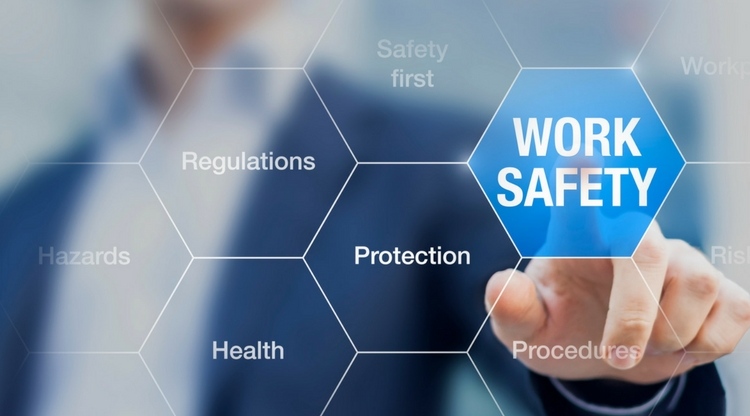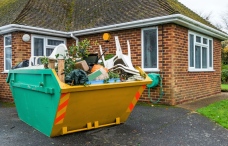It is essential for business owners to keep their business premises protected and safe, which will guarantee the wellbeing and safety of all employees working there. When you, the business owner succeed in maintaining a safe workplace, it will also safeguard you from liabilities, exposures to lawsuits and losses. Ideally, as a business owner, you should shield your business from various elements that include electrical hazards, fire, accidents and dust explosions. From all these, the electrical problems are the common thing that everyone faces most of the time. Remember, it’s not the DIY work, in any kind of electrical emergency, immediately call a professional electrician for the reliable electrical services.
CRITICAL SAFETY REQUISITES FOR BUSINESSES ARE AS FOLLOWS:
-
DISCONNECTING ELECTRICAL EQUIPMENT
In a workplace, electrical equipment such as heating and cooling systems, telephones, computers, laptops, televisions, electric machines and kitchen appliances and more can be found. To keep your work or business place safe, disconnecting electrical equipment is imperative. Some quick tips are enumerated below:
-
Switch off the faulty electrical equipment, and disconnect it from the power outlets when it is safe to do so. Refrain from using it, rather, place a label on it showing it is defective and report it, so it can be tested, repaired or changed.
-
When you are disconnecting electrical equipment from power outlets or disconnecting power cables, ensure to hold the plug and not the cable to avert damage to the wiring.
-
Switch off and disconnect electrical equipment when a storm draws near.
-
During a flood or storm, if you have lost power, then turn off power points and disconnect electrical equipment to prevent shock.
-
Turn off and disconnect any electrical equipment that is wet when it is safe to do so.
-
EQUIPMENT FOR CLEARING DUST
Excessive dust in workplaces can be very hazardous. Dust can come from cement, grain, flour, silica, metals, wood, asbestos and materials such as rubber and leather. Fires or explosions can occur due to potentially combustible cloud formed by concentrated dust. Thus, it is vital to have appropriate equipment for clearing dust in place:
-
A vacuum cleaner approved for dust collection. Use it for cleaning dust from surfaces.
-
An exhaust ventilation system eliminates dust from a particular site.
-
A dilution ventilation system spreads out dust uniformly all through a particular area, averting it from forming a concentrated mass within a specific place.
You need to ensure that dust collection and extraction system adheres to local requirements, for instance, the fire code.
-
FIRE EXTINGUISHERS
Every workplace must have appropriate fire extinguishers so that when a fire breaks out, extinguishers can be used to put it out or control it until the fire services reach. This can save lives, equipment and property.
Selecting the right fire extinguisher is extremely important. A fire extinguisher should have an independent testing laboratory’s seal and labelled with standard symbols for ‘fire categories’ that it can extinguish. These categories are divided into three major fire classes, enumerated as follows:
-
Class-A: This fire extinguisher class is used for general combustibles like paper, cloth, wood, rubber and plastics.
-
Class-B: This fire extinguisher class is used for flammable liquids such as oil, flammable gas, petrol, oil-based paint, tar, lacquer and grease.
-
Class-C: This fire extinguisher class is used for energised electrical equipment like appliances, circuit breakers, fuse boxes, machinery and wiring.
The fire extinguisher you select ought to be large enough to put out the fire it’s meant to extinguish. Every fire extinguisher has a label containing rating that specifies the size of fire it can deal with. In addition, you can select between a disposable extinguisher and a rechargeable one. The disposable extinguisher should be changed after one use.
If you see, a ‘red slash’ through any of the symbols then it is an indicator that the extinguisher can’t be used for that particular ‘fire type’. However, some fire extinguishers can be used for all fire classes.
Placing Your Extinguisher in the Right Place: Fire extinguisher must be installed in a place that can be easily accessed such as near an escape route and away from hazardous appliances and equipment. It is very important that it should be fully charged and in good working condition.
If the property or building is equipped with a sprinkler system to deal with fires, consult a certified plumber to ensure the water supply network is in excellent working condition.
-
PPE (PERSONAL PROTECTIVE EQUIPMENT)
Commencing from dust explosions, flying chips and electric shocks to splashes of toxic material and fire, they can cause severe injuries and/ or illnesses. Thus, it is highly recommended to keep your workforce safe from these hazards and other probable risks by having them wear appropriate personal protective equipment. It can include:
-
Face shields or masks
-
Safety helmets
-
Safety glasses or goggles
-
Breathing respirators
-
Safety boots and rubber boots
-
Gloves, gauntlets, and sunscreen for skin protection
-
Fall arrest harnesses for those working at heights and more
Requisite information and training should be provided to your workforce concerning the importance of personal protective equipment as well as how to use, store and preserve their personal protective equipment to guarantee their safety. Ensure selecting personal protective equipment that adheres to the current Australian standards.
FINAL WORDS
Adhering to these critical electrical safety tips will assist you in keeping your business or workplace protected and safe for you and your workforce in a better way. Nonetheless, by hiring a reputed electrical contractor, you can further uphold electrical safety in the workplace.




